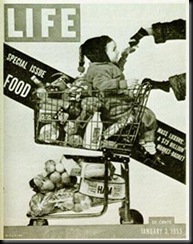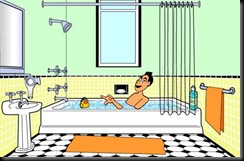Could your purse be making you sick? Health magazine on lurking viruses
Sure, there are outbreaks of microbes and viruses across the country, but some of these germs are lurking where you least expect them. Health magazine senior editor Frances Largeman-Roth pinpoints the 12 germiest places you’re likely to encounter during an average day and devises ways for you to keep clean. After all, the fight is in your hands. Literally. Eighty percent of infections are spread through hand contact. So wash up, people, and get ready to wage a bit of germ warfare of your own:
1. Your kitchen sink
Kitchen sinks are dirtier than most bathrooms. There are typically more than 500,000 bacteria per square inch in the drain alone. Plus your sponge, basin and faucet handles are crawling with bacteria as well.
Reduce the risk: Clean your kitchen counters and sink with an antibacterial product after preparing or cleansing food, especially raw fruits and vegetables, which carry lots of potential pathogens like salmonella, campylobacter and E. coli. Wash your hands as well with warm, soapy water for 20 seconds (long enough to sing “Happy Birthday”). Sanitize sponges by running them through the dishwasher’s drying cycle, which will kill 99.9 percent of bacteria on them. As for the sink, clean it twice a week with a solution of one tablespoon of chlorine bleach and one quart of water. Scrub the basin, the pour solution down the drain.
2. Airplane bathrooms
It may not be a shock that there are a huge number of germs in most public bathrooms, but experts agree the cramped and overused ones on airplanes are the worst. There are often traces of E. coli or fecal bacteria on the faucets and door handles because it’s hard to wash hands in the tiny sinks. And the volcanic flush of the commode tends to spew particles into the air, coating the floor and walls with whatever had been swirling around in it.
Reduce the risk: Toilet seats are surprisingly clean, but use the paper cover when available. After using the toilet, wash and dry your hands thoroughly, and use a paper towel to handle the toilet seat, lid, tap and doorknob. Put the lid down before you flush. If there’s no lid, turn your back to the toilet while flushing and beat a hasty retreat.
3. A load of wet laundry
Any time you transfer underwear from the washer to the dryer, you’re getting
E. coli on your hands. Just one soiled undergarment can spread bacteria to the whole load and machine.
Reduce the risk: Run your washer at 150 degrees (you can check the temperature of your washing-machine water with a candy thermometer) and wash whites with bleach (not the color-safe type; it doesn’t pack the same punch), which kills 99.9 percent of bugs. Transfer wet laundry to the dryer quickly so germs don’t multiply, wash underwear separately (there’s about a gram of feces in every pair of dirty underwear) and dry for at least 45 minutes. Wash your hands after laundering.
4. Public drinking fountains
Drinking fountains are bound to be germy, but school fountains are the worst, with anywhere from 62,000 to 2.7 million bacteria per square inch on the spigot.
Reduce the risk: Send your child to school with plenty of their own beverages and tell them to wash their hands throughout the day.
5. Shopping cart handles
Saliva, bacteria and fecal matter are just a few of the substances found on shopping cart handles. Cart handles rank high on the yuck scale because they’re handled by dozens of people every day and, of course, raw food carries nasty pathogens.
Reduce the risk: Many stores have dispensers with disinfectant wipes near the carts. If your store doesn’t, bring your own wipes and give the handle a quick swab. Or carry along a cart cover like the Grip
6. ATM buttons
If you’re not careful, you might pick up more than quick cash from your local ATM. These buttons have more gunk on them than most public-bathroom doorknobs! ATMs aren’t frequently cleaned, and are regularly touched — a perfect combination for a lot of germs.
Reduce the risk: Carry an alcohol-based hand sanitizer with you and rub it on hands after visits. Also be sure to do it after you handle paper money, which actually carries quite a few germs, too.
7. Your handbag
Recent studies found that most women’s purses had tens of thousands of bacteria on the bottom and a few were overrun with millions. Another study found bugs like pseudomonas (which can cause eye infections) and skin-infection-causing staphylococcus bacteria, as well as salmonella and E. coli.
Reduce the risk: Instead of slinging your bag on the floor, hang it on a hook whenever possible — especially in public bathrooms — and keep your bag off the kitchen counter. Stick with leather or vinyl purses, which are typically cleaner than cloth.
8. Playgrounds
There’s just no way to put this delicately: Children tend to ooze bodily fluids and then spread them around. When researchers sampled playgrounds, they found blood, mucus, saliva and urine. Pair those findings with the fact that children put their fingers in their mouths and noses more than the rest of us, and it’s easy to understand why Junior (and maybe his mom or dad) has the sniffles.
Reduce the risk: Carry alcohol wipes or hand-sanitizing gel in your purse, and clean everybody’s hands a couple of times during a park visit, especially before snacking. Pick warm sunny days for outdoor play: The sun’s ultraviolet light is actually a very effective disinfectant. Most bugs won’t survive long on surfaces that are hot and dry.
9. Mats and machines at health clubs
Antibiotic-resistant staphylococcus has been found on yoga mats and cardio and resistance machines. At high schools, antibiotic-resistant-staph infections have been transmitted through wrestling mats. The same thing could happen at health clubs
Reduce the risk: Wipe down machines with antibacterial wipes before working out. Bring your own yoga mat or cover a loaner with your towel. Shower after a workout and soap up your skin to rinse off any bacteria you may have been exposed to, as thorough washing gets rid of antibiotic-resistant staph.
10. Your bathtub
Shocking, but true: The place you go to get clean is quite dirty. A recent study found staphylococcus bacteria, a common cause of serious skin infections, in 26 percent of the tubs tested, as compared with just 6 percent of garbage cans. Tubs typically had more than 100,000 bacteria per square inch! You’re washing germs and viruses off your body and the tub is a fairly moist environment, so bacteria can grow.
Reduce the risk: Once a week, apply a disinfecting cleaner to the tub and actually scrub. Then you need to wash the germs down the drain with water and dry the tub with a clean towel. If you leave the tub wet, germs are more likely to survive. If someone who uses the tub has a skin infection, scrub it afterward with a solution of two tablespoons bleach in one quart of water.
11. Your office phone
This is enough to make you dial 911: Office phones often have more than 25,000 germs per square inch, and your desk, computer keyboard and mouse aren’t far behind. Phones, including cell phones, can be pretty gross because they get coated with germs from your mouth and hands.
Reduce the risk: Simply cleaning your desk, phone and keyboard with a disinfecting wipe once in the middle of the day will kill 99.99 percent of the bacteria and viruses.
12. The hotel-room remote control
What’s the first thing you do when you settle in at a hotel? You grab the remote control and switch on the TV — you, and the hundreds of other guests who’ve stayed there. How dirty is it? A recent study tested various surfaces for the cold virus after a group of sick people had stayed overnight and found the virus on the remote, door handles, light switches, pens and faucet handles.
Reduce the risk: Clean the remote control, phone, clock radio, door handles and light switches with germicidal wipes.
Source:Msnbc





No comments:
Post a Comment